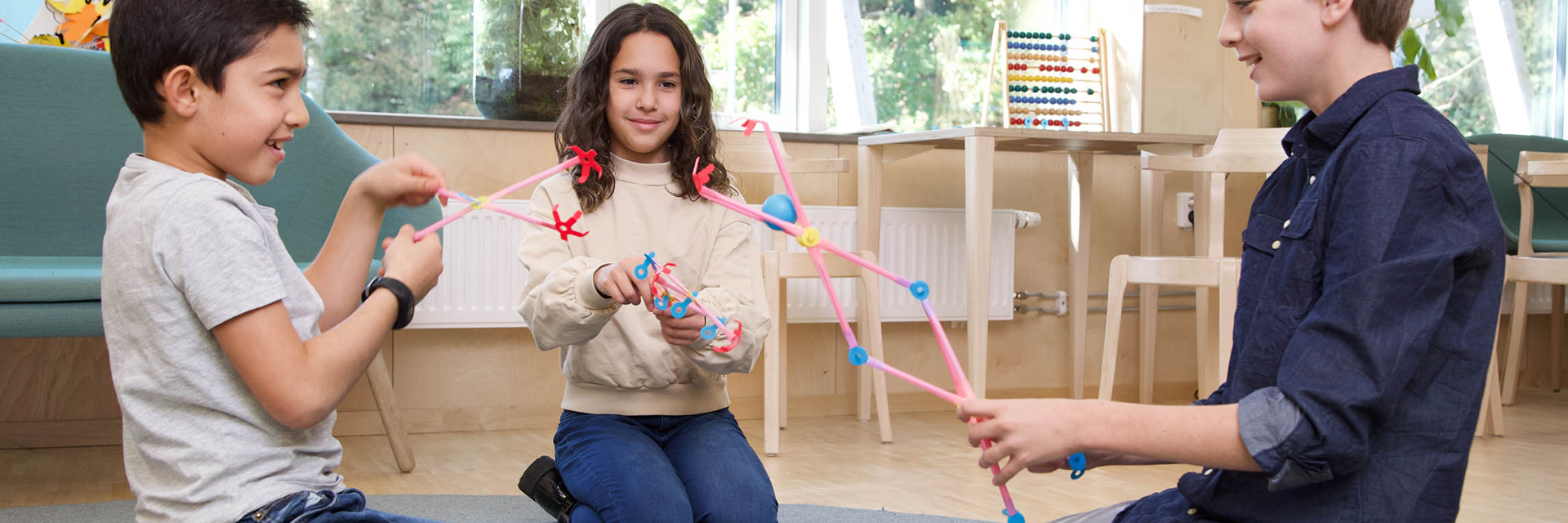5 Reasons Why The Power of STEM in Cross-Curricular Learning is Critical

Unlocking Educational Synergies
In the dynamic landscape of education, integrating Science, Technology, Engineering, and Mathematics (STEM) has emerged as a catalyst for fostering cross-curricular learning. This approach (cross-curricular learning through STEM) transcends traditional subject boundaries, offering a holistic educational experience that prepares learners for future challenges.
When applied correctly through links between lessons that are natural and not forced, cross-curricular learning has significant benefits, giving learners a more diverse and comprehensive educational experience. Here are five reasons why cross-curricular learning through the use of STEM is so critical for the learners of today's future:
1. Breaking Down Learning Barriers: The Essence of Cross-Curricular Learning
2. Real-World Relevance: A Catalyst for Engagement
3. Strengthening Critical Thinking Skills: A Holistic Approach
4. Team Collaboration: A Prelude to Professional Dynamics
5. Embracing Technology: The Heartbeat of Modern Learning
Let’s explore these in more detail:
1. Breaking Down Learning Barriers: The Essence of Cross-Curricular Learning
STEM education serves as a bridge, seamlessly connecting various academic subjects such as integrating coding and automation by adding sensors and motors to learner-built structures. It breaks down the barriers that often characterise traditional subject-based learning, encouraging collaboration and a more interconnected understanding of the world. This approach provides the ability to create a curriculum that reflects the integrated nature of real-world challenges.
2. Real-World Relevance: A Catalyst for Engagement
STEM subjects naturally lend themselves to real-world applications, making learning more engaging and relevant for learners. By integrating STEM across various disciplines, teachers and educators can create a syllabus that mirrors the interconnected nature of industries and professions. This enhances the learners' engagement and prepares them for a future where problem-solving often requires a multidisciplinary approach.
3. Strengthening Critical Thinking Skills: A Holistic Approach
Cross-curricular STEM learning cultivates critical thinking skills by encouraging learners to apply knowledge and problem-solving techniques across different contexts. The ability to transfer skills from mathematics to science or technology to engineering enhances cognitive flexibility, a key competency for success in the 21st century, creating a dynamic cognitive framework that allows individuals to approach challenges in a systematic and adaptable manner. Championing an integrated STEM approach nurtures a learner’s analytical thinking and adaptability.
4. Team Collaboration: A Prelude to Professional Dynamics
In the professional world, collaboration is a cornerstone of success. STEM education, emphasising project-based learning and interdisciplinary activities, mirrors the collaborative dynamics of many industries. Harnessing this aspect of STEM to instil teamwork and communication skills in learners prepares them for the collaborative nature of future workplaces.
5. Embracing Technology: The Heartbeat of Modern Learning
In an era dominated by digital and technological advancements, integrating STEM provides a natural avenue for incorporating cutting-edge technologies into the curriculum through coding and automation. STEM learning infuses digital literacy, coding, and innovative technologies, ensuring that learners are well-versed in the tools that define the modern world.
A Transformative Educational Paradigm
Integrating STEM education as a driver for cross-curricular learning heralds a transformative paradigm for education in the UK. Decision-makers, leaders and teachers have the opportunity to shape a syllabus that meets both the National Curriculum and the Curriculum for Excellence standards and prepares learners for the complexities of an interconnected world.
By breaking down disciplinary barriers, fostering collaboration, and aligning education with application in the real world, the benefits of cross-curricular STEM learning are boundless, creating a generation of learners equipped to thrive in the challenges of the future.
Embrace cross-curricular learning with Strawbees Classroom and Kits made for all skills and abilities - teachers and learners alike.
You May Also Like
These Related Stories

The Importance of Cross-Curricular Learning Through STEAM Education

We need to act today to revolutionise learning in the UK and create the problem-solvers of tomorrow


